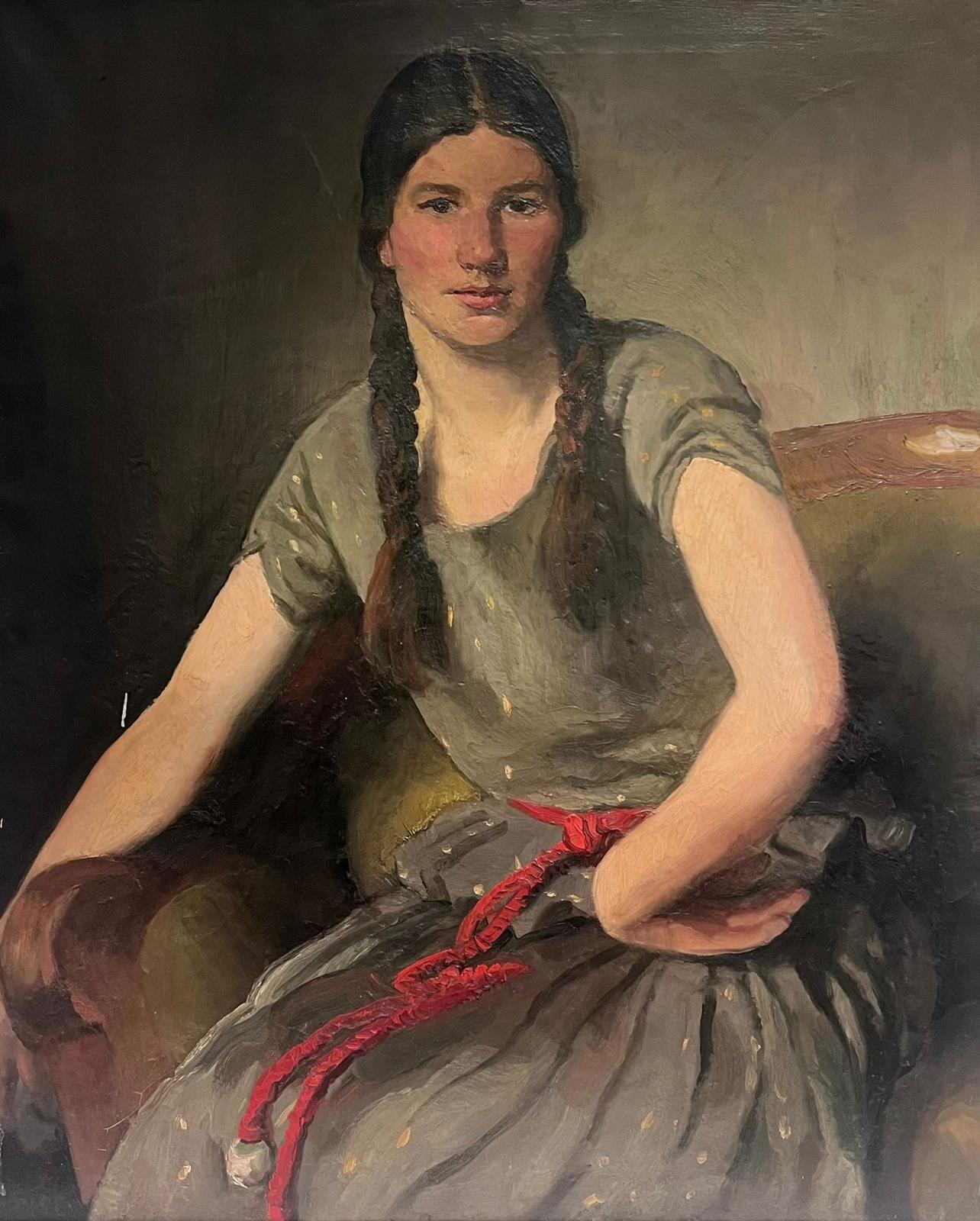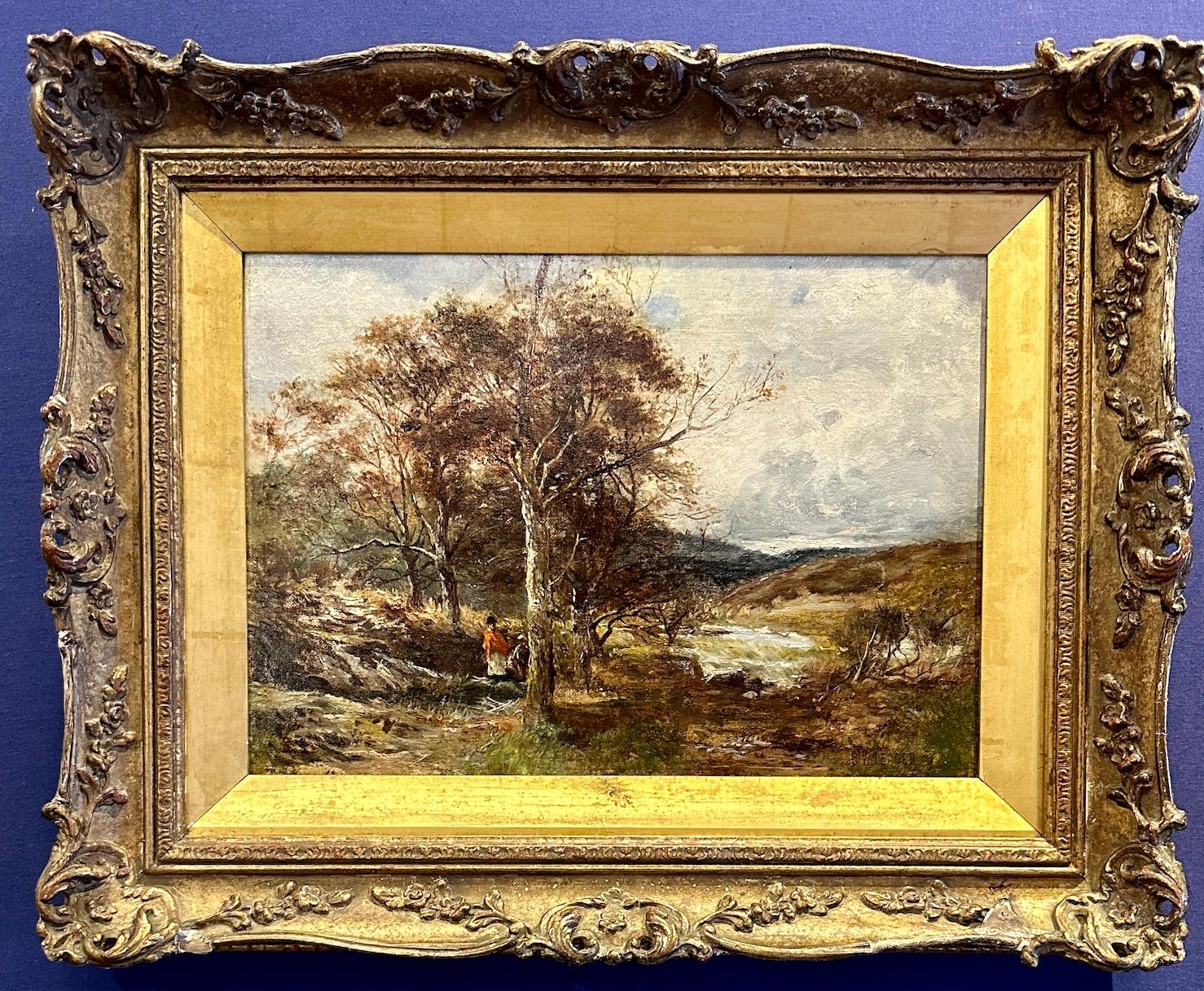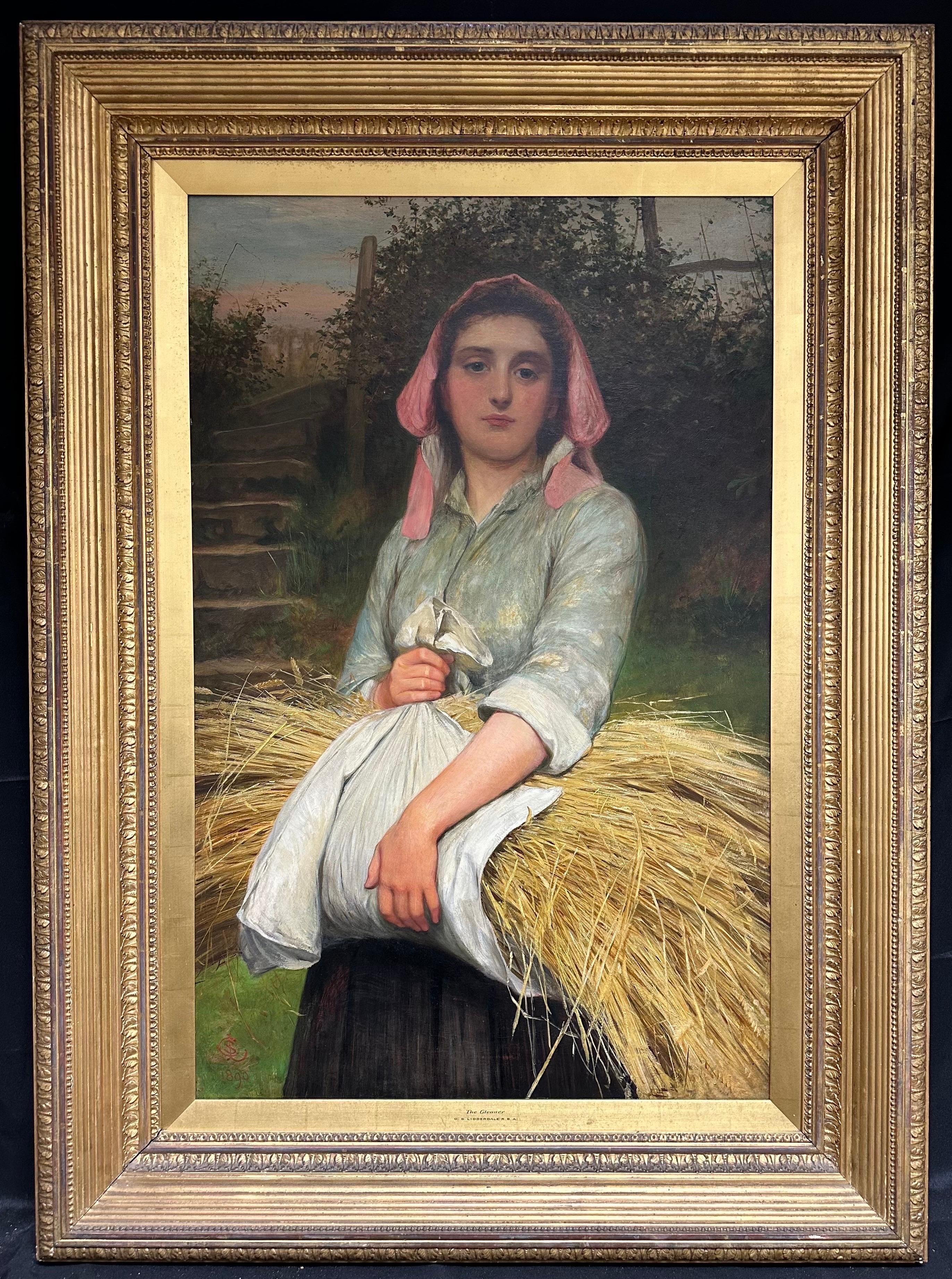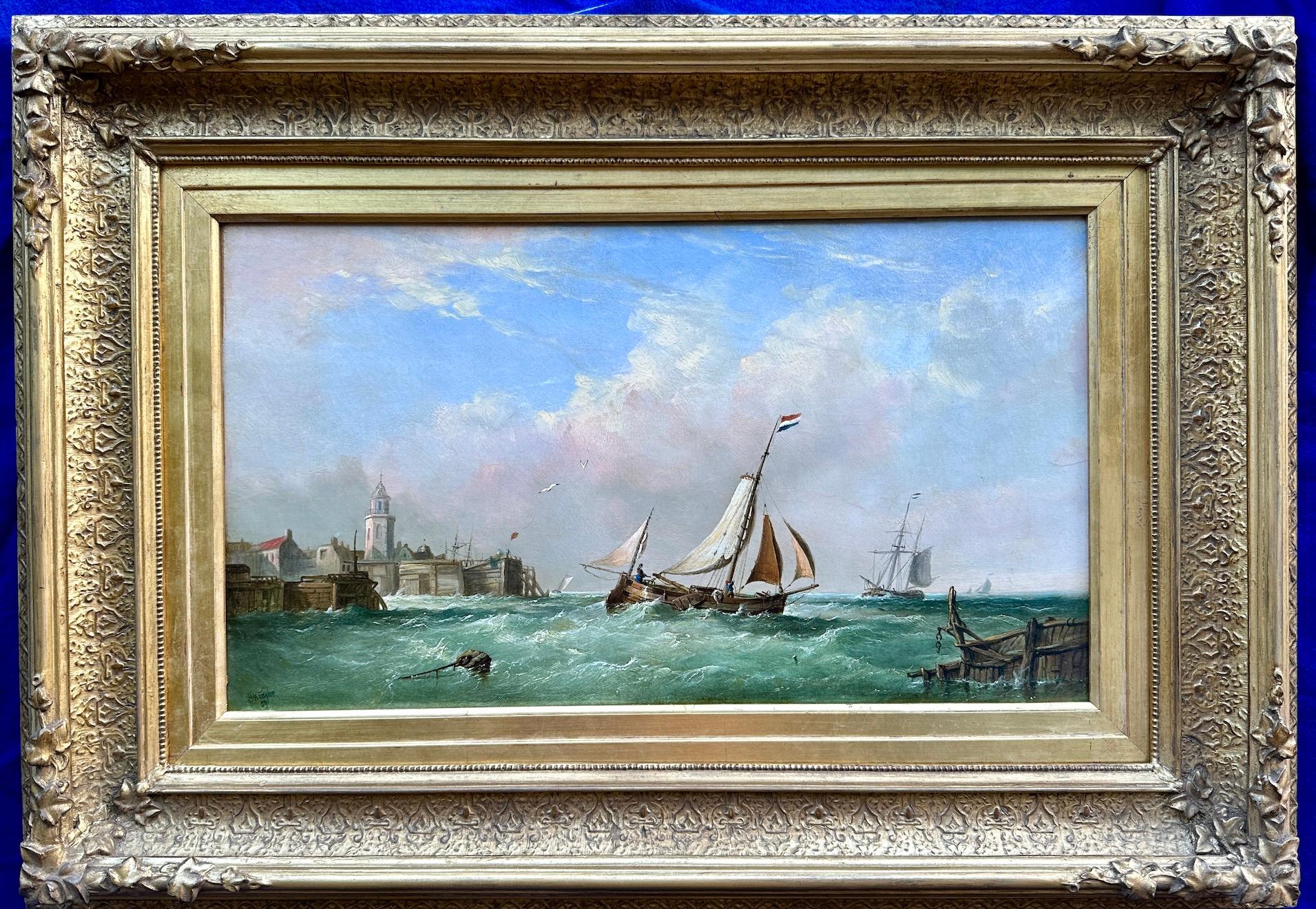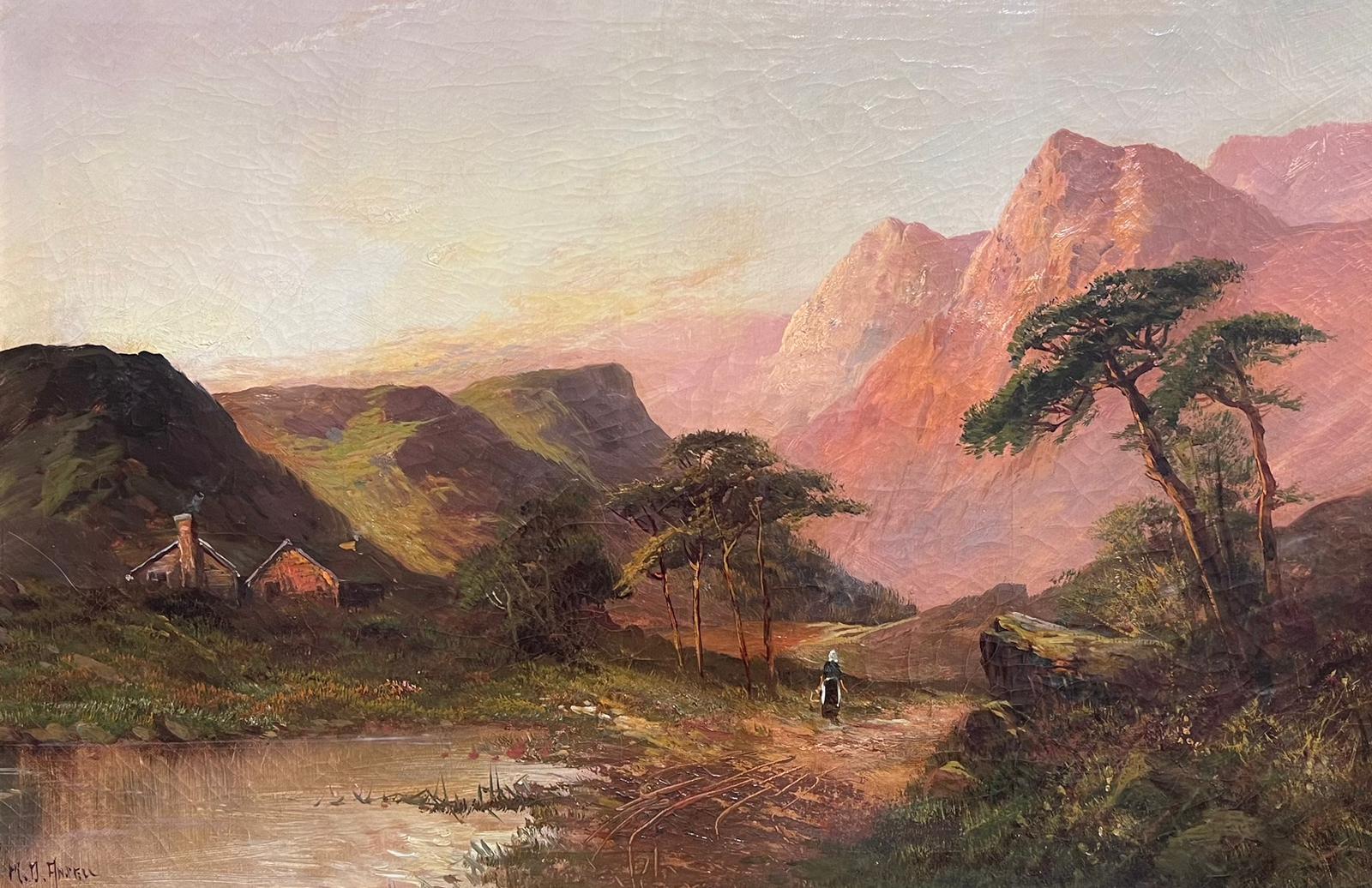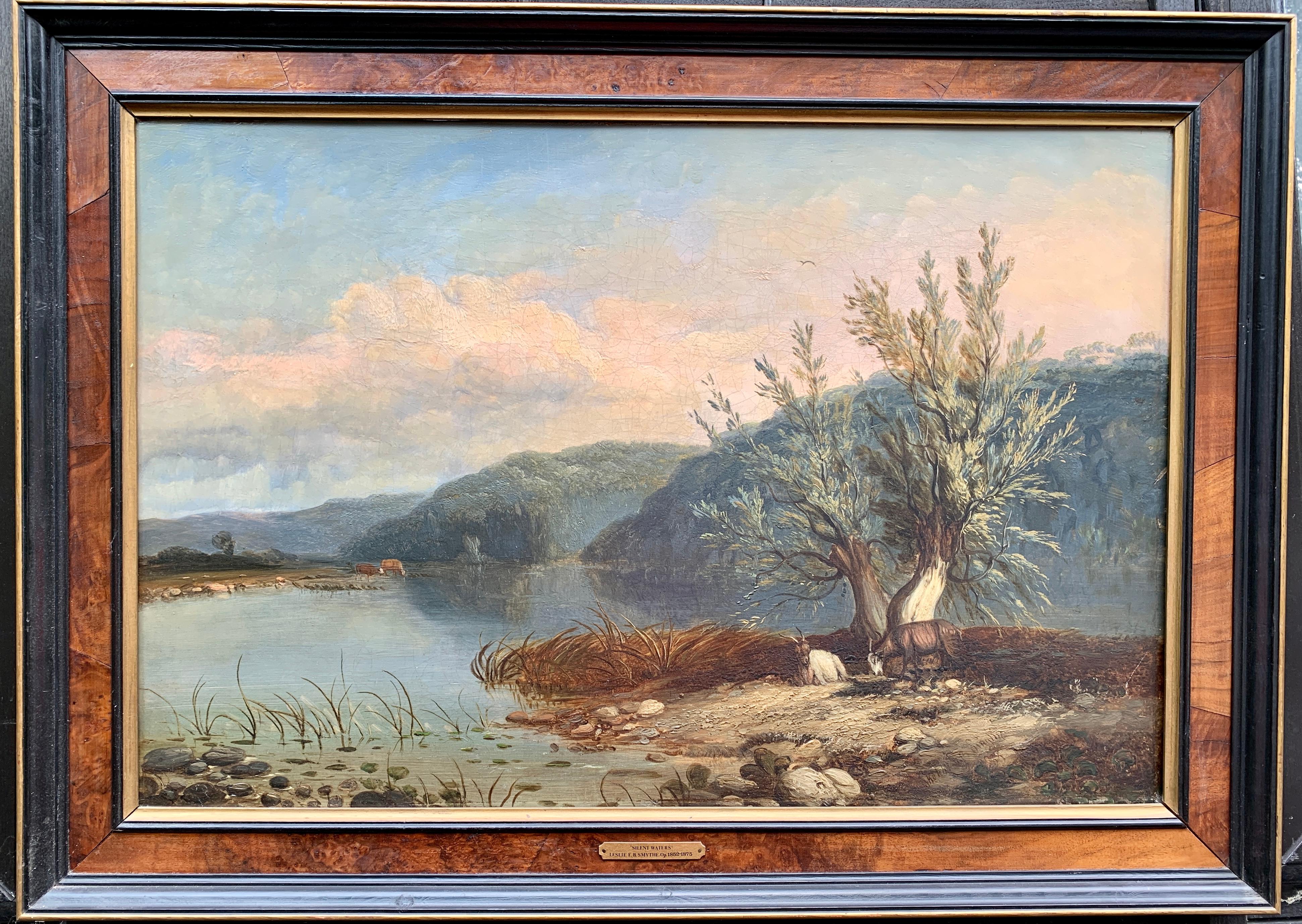Items Similar to Historical military oil painting of a prisoner being brought before officers
Want more images or videos?
Request additional images or videos from the seller
1 of 15
John Seymour LucasHistorical military oil painting of a prisoner being brought before officers1882
1882
About the Item
John Seymour Lucas RA
British, (1849-1923)
Stolen Despatches
Oil on canvas, signed & dated 1882
Image size: 19.5 inches x 29.5 inches
Size including frame: 27 inches x 37 inches
Provenance: N Mitchell, Duke Street, London
A wonderfully detailed historical painting of a prisoner being brought before a general by John Seymour Lucas. Two soldiers can be seen forcing an older man dressed in civilian clothes to stand before two Georgian officers at a table. The uniform of the soldiers is similar to those worn by British soldiers during the American War of Independence (1775-1783). The painting could well be referencing the civilian spies organised by George Washington.
John Seymour Lucas was born in London on 21 December, 1849 to Henry and Elizabeth Lucas (née Seymour). He was the nephew of the portrait painter John Lucas and two of his children, Sydney Seymour Lucas and Marie Ellen Seymour Lucas also became artists. His father was a coach joiner and Lucas initially trained as a woodcarver, however, encouraged by his uncle he became an apprentice to a sculptor. At the age of 16, he decided to pursue a career in painting and began studying with his cousin John Templeton Lucas (1836-1880) in his spare time before attending the St. Martin's Lane Art School. By 1871, he had entered the Royal Academy School and during the same year began exhibiting at the Royal Society of British Artists (RSBA). In 1872, he made his debut at the Royal Academy exhibitions. He was later elected an associate member of the RA in 1876 and a full Academician in 1898.
In 1877, he married the Parisian artist Marie Cornelissen (1850-1921) who was the daughter of the artist and colourman Louis Cornelissen. She attended the St Martin’s Lane and Royal Academy schools where they met and also went on to exhibit at the RA and RSBA. Later in the same year, Lucas was elected a member of the New Society of Painters in Watercolours. He continued his artistic education, travelling around Europe where he studied the Flemish and Spanish Masters and was particularly inspired by van Dyck and Velázquez. On his return, he began painting historical scenes from the 16th to 18th century including the Spanish Armada, English Civil War and the Jacobite rebellions. His works were highly detailed and contained accurate portrayals of period costumes and interiors.
During the late 1880’s his reputation flourished and he became friends with John Singer Sargent. A portrait of him by Singer Sargent is held at the National Portrait Gallery. His success led to commissions for a number of major works for prestigious public buildings and royal clients including Queen Victoria. As well as producing paintings, he also designed sets and costumes for theatres.
From 1882, he lived at Woodchurch Road in Hampstead where he built a studio. Towards the end of World War I, Lucas moved to Blythburgh, Suffolk where he remained until his death on 8 May, 1923. His works can be found in a number of public collections including Bristol Museum, Hartlepool Museum, Laing Art Gallery, Orleans House Gallery, Royal Academy of Arts, Royal Armouries Museum, the Tate, Victoria & Albert Museum, Walker Art Gallery, Wolverhampton Art Gallery and more.
Presentation: The painting is housed in a new, English made gilt frame which is in excellent condition. The reverse retains old label for N Mitchell, an art dealership established around 1875 by Nathan Mitchell at 52 Copthall Avenue, London. By 1909, it had opened a branch at 49 Duke Street, remaining there until 1929 when it relocated to 2 Duke Street. The business later took over the premises next door, operating at 2 & 3 Duke Street until Nathan’s death in 1945. The dealership was continued by his son George who ran it as Mitchell Galleries Ltd until his death in 1951. The painting also bears a label for Pettus House, an antique dealership based in Norwich.
Condition: As with all of our original antique oil paintings, this work is offered in ready to hang gallery condition, having been professionally cleaned, restored and revarnished.
© Benton Fine Art
- Creator:John Seymour Lucas (1849 - 1923, British)
- Creation Year:1882
- Dimensions:Height: 27 in (68.58 cm)Width: 37 in (93.98 cm)Depth: 3 in (7.62 cm)
- Medium:
- Movement & Style:
- Period:
- Condition:
- Gallery Location:Nr Broadway, GB
- Reference Number:1stDibs: LU156213922822
About the Seller
4.9
Platinum Seller
These expertly vetted sellers are 1stDibs' most experienced sellers and are rated highest by our customers.
Established in 1972
1stDibs seller since 2015
273 sales on 1stDibs
Typical response time: <1 hour
Associations
The British Antique Dealers' AssociationLAPADA - The Association of Arts & Antiques DealersInternational Confederation of Art and Antique Dealers' Associations
- ShippingRetrieving quote...Ships From: Nr Broadway, United Kingdom
- Return PolicyA return for this item may be initiated within 3 days of delivery.
More From This SellerView All
- 19th Century genre oil painting of a family playing marblesBy William BromleyLocated in Nr Broadway, WorcestershireWilliam Bromley British, (1816-1890) A Game of Marbles Oil on canvas, signed Image size: 13.5 inches x 17.75 inches Size including frame: 19.75 inches x 24 inches A charming genr...Category
19th Century Victorian Figurative Paintings
MaterialsOil, Canvas
- 19th Century genre oil painting of a woman & child in a Welsh cottageLocated in Nr Broadway, WorcestershireAlfred Provis British, (1818-1890) By the Fireside Oil on canvas, signed & dated 1869 Image size: 10.5 inches x 15.5 inches Size including frame: 21.5 inches x 26.5 inches This charming cottage scene by Alfred Provis features a woman preparing supper by a fire with her young daughter. As the mother peels the turnips and places them in the pot, the girl’s attention is drawn to the kitten feeding from a saucer. The dress and hat of the woman bears a similarity to those found Provis’s other scenes of Welsh cottage interiors. The artist was known to have visited North Wales around the time this painting was produced. In 1869, he exhibited a work entitled ‘Interior of a Welsh Farmhouse’ at the Royal Society of British Artists. Given the level of detail in the painting and the fact that it is in such an impressive original frame, it is possible this is the same painting as the one exhibited. Alfred Provis was a genre painter born on 18 February, 1818 in Chippenham, Wiltshire. He was the son of John Provis, a timber merchant and his second wife Ann Banks. He spent time in London being tutored by the historical and portrait artist John Wood (1801-1870) before returning to Chippenham. He began exhibiting at the Royal Society of British Artists in 1843, continuing to exhibit there regularly until 1886. He made his debut at the Royal Academy in 1846 with a work entitled ‘A Cottage Door...Category
19th Century Victorian Figurative Paintings
MaterialsCanvas, Oil
- Genre oil painting of a children’s coronation marching bandBy Joseph ClarkLocated in Nr Broadway, WorcestershireJoseph Clark ROI British, (1834-1926) The Coronation March Oil on canvas, signed & dated 1902 Image size: 25.5 inches x 19.5 inches Size including frame: 32.5 inches x 26.75 inches This painting by Joseph Clark depicts a lively group of boys leading a patriotic parade through a village. Two of the older children hold standards aloft, whilst the others wave flags or play instruments. In 1902, at the time of this painting Clark was living on Pinner Road, Harrow-on-the-Hill. The church depicted is very similar to Pinner Parish Church, which would have been the closest one to him at the time. On 9 August of that year, the coronation of Edward VII and Alexandra took place at Westminster Abbey. Special events were held all across the country to mark the occasion. Clark would probably have attended his local celebrations and was most likely was inspired to record his version of it. Joseph Clark was born on 4th of July 1834 at Cerne Abbas, Dorset. He was the son of William Henry Clark, a draper and his wife Susanna (née Shepherd). After the death of his father, his mother encouraged her son to move to London to study at the Leigh’s Academy, (now Heatherley School of Fine Art) which was set up by James Matthews Leigh in 1848. He later continued his artistic education by enrolling at the Royal Academy School and began specialising in genre scenes. He made his debut at the Royal Academy in 1857 with ‘The Sick Child...Category
Early 20th Century Victorian Figurative Paintings
MaterialsCanvas, Oil
- Historical genre oil painting of a royal messengerBy Arthur David McCormickLocated in Nr Broadway, WorcestershireArthur David Mccormick Irish/British, (1860-1943) The Royal Fanfare Oil on canvas, signed Image size: 23.5 inches x 17.5 inches Size including frame: 31.5 inches x 25.5 inches Provenance: Frost & Reed A wonderful historical painting of a trumpeter signalling the arrival of the Royal Ship by Arthur David Mccormick. The Herald, dressed in yellow livery plays a fanfare as the others prepare for the arrival of the Royal boat. Arthur David Mccormick was a painter of historical, naval, and genre scenes who was born in Coleraine, Ulster in Northern Ireland on 14 October, 1860. After attending his local school, he studied at the Government School of Design in Belfast. He then moved to London where he enrolled at the Royal College of Art in 1883. To support his studies he also contributed drawings and designs to the English Illustrated Magazine and Illustrated London News. McCormick made his debut at the Royal Academy in 1889 continuing to exhibit there throughout his life. He exhibited at the Royal Society of British Artists from 1890, becoming a member in 1897 and at the Royal Institute of Oil Painters, Royal Institute of Painters in Watercolour and the Alpine Club Gallery. As well as being a yachtsman he also took an interest in mountaineering and on 5 February 1892 joined Sir Martin Conway’s expedition to the Karakoram Himalayas as their artist. He produced more than 300 illustrations, mainly watercolour paintings which appeared in Conway's 1894 book ‘Climbing and exploration in the Karakoram Himalayas’. He later published his own book ‘An artist in the Himalayas’ using his pencil sketches from the expedition. He married Helen MacAlpine-Woods at Strean Church, Newtonwards, Ireland on 25 September, 1894. The couple lived at 58 Queens Road, St John’s Wood where their only daughter Helen Gladys was born in 1895. During the same year, he travelled with Clinton T. Dent’s on his expedition to the Caucasus Mountains, producing a number of sketches and drawings. He was also made a fellow of the Royal Geographical Society in 1895 in recognition of his work. After the death of his wife in 1899, he remained at Queens Road from where he continued to work and exhibit, employing a governess to help with his daughter. When the Ulster Arts Club was formed in 1902 he was among its first honorary members. In 1905, he was made a member of the Royal Institute of Oil Painters and in 1906 became a member of the Royal Institute of Painters in Watercolours. On 7 May, 1906 he married Helen (Nellie) Elizabeth K Laker, his daughter’s governess. In addition to painting he also produced illustrations for many books mostly related to travel and adventure. He was employed by John Player & Son in 1927 to paint the sailor's head and shoulders for their cigarette packets as well as producing a number of oil paintings which were used as promotional posters. Around 1934 he moved to 53 Colet Gardens, Hammersmith, where he spent the rest of his life. He died in London, aged 83, on 12 March, 1943. Examples of his work can be found at the Alpine Club Collection, Coleraine Museum, Grundy Art Gallery, Imperial War Museum, National Museum of Wales, National Museum of the Royal Navy Portsmouth, Newport Museum, The Box Plymouth and Williamson Art Gallery. Presentation: The work is housed in its original gilt frame which is in excellent condition. The reverse bears a label for Frost & Reed and is dated 5 November 1936. Frost & Reed is a well known fine Art Gallery, frame makers and fine art publishers founded in Bristol in 1808 by William Hill. The business was bought by John Frost in 1859 who ran it until his death in 1875. His nephew Walter Frost took over the business and in 1881 brought in William Reed...Category
Early 20th Century Victorian Figurative Paintings
MaterialsOil, Canvas
- 19th Century genre oil painting of a French cobbler at workLocated in Nr Broadway, WorcestershireÉmile Renard French, (1850-1930) Cordonnier à Jouy, Eure-et-Loir (Cobbler of Jouy) Oil on canvas, signed & dated 1883 Image size: 12.75 inches x 17.5 inches Size including frame: 23.5 inches x 28.25 inches A realist painting of a cobbler in his workshop by Émile Renard. The composition features an elderly shoemaker seated on a rickety chair next to a bench. The light from a window illuminates his work. Émile Henry...Category
19th Century Victorian Figurative Paintings
MaterialsCanvas, Oil
- 19th Century historical military oil painting of Royal Dragoon Cavalry GuardsLocated in Nr Broadway, WorcestershireRichard Beavis British, (1824-1896) Royal Dragoon Guards on the March Oil on canvas, signed with monogram Image size: 9.5 inches x 13.5 inches Size including frame: 17.25 inches x 2...Category
19th Century Victorian Figurative Paintings
MaterialsCanvas, Oil
You May Also Like
- Huge Antique European Portrait of Girl with Plaits in Hair oil on canvasLocated in Cirencester, GloucestershirePortrait of Girl with Plaited Hair European School, late 19th century oil on canvas, framed framed: 41.5 x 35.5 inches canvas: 36 x 30 inches provenance: private collection, UK condi...Category
Late 19th Century Victorian Portrait Paintings
MaterialsOil, Canvas
- 19th century Fall English landscape with figures on a path in the highlandsBy Benjamin Williams LeaderLocated in Woodbury, CTWonderful Autumn/Fall landscape by one of Englands finest landscape painters. Born as Benjamin Williams, the artist added the surname Leader (his Father’s middle name) to distingui...Category
1880s Victorian Landscape Paintings
MaterialsCanvas, Oil
- Huge Victorian Oil Painting by Famous Artist Portrait Country Girl in HarvestBy Charles Sillem LidderdaleLocated in Cirencester, GloucestershireThe Gleaner by Charles Sillem LIDDERDALE (British, 1831-1895) signed & dated 1890 oil painting on canvas, framed in what we believe to be the original frame framed: 51.5 x 37.5 inch...Category
Late 19th Century Victorian Figurative Paintings
MaterialsOil, Canvas
- 19th century English marine Sailing scene of Dutch fishing boats by a harborBy Henry King TaylorLocated in Woodbury, CTHenry King Taylor was a marine and coastal scene painter who lived in London. He exhibited at the Royal Academy from 1859 to 1864 with titles includi...Category
1850s Victorian Landscape Paintings
MaterialsCanvas, Oil
- Antique Scottish Highland Landscape Oil Painting Figures Walking Sunset GlenLocated in Cirencester, GloucestershireThe Highland Glen by F. E. Jamieson (British 1895-1950) signed with pseudonym oil painting on canvas, framed framed: 25.5 x 35 inches canvas : 20 x 30 inches provenance: private coll...Category
Early 20th Century Victorian Landscape Paintings
MaterialsCanvas, Oil
- 19th century English rural landscapes, with goats by a river and peopleLocated in Woodbury, CTLESLIE E.B. SMYTHE 19th century English rural landscapes, with goats by a river and people. Smythe was an English painter who was active paintings in both Scotland and England. He ...Category
1860s Victorian Landscape Paintings
MaterialsCanvas, Oil
Recently Viewed
View AllMore Ways To Browse
Death Of Major
Painting Officer
Painting Of Officer
Historical Antiques
Painting Antique Table
World War 2 Paintings
Set Of Antique Oil Paintings
Antique Painting With Table
St John Oil Paintings
Set Of Two Framed Oil Paintings
Oil Paintings Of Doors
3 Sons Painting
1849 Painting
The Prisoner
Old Master Paintings War
World War Two Military
Framed Art Paintings Sets Of 3
John English Oil Painting
